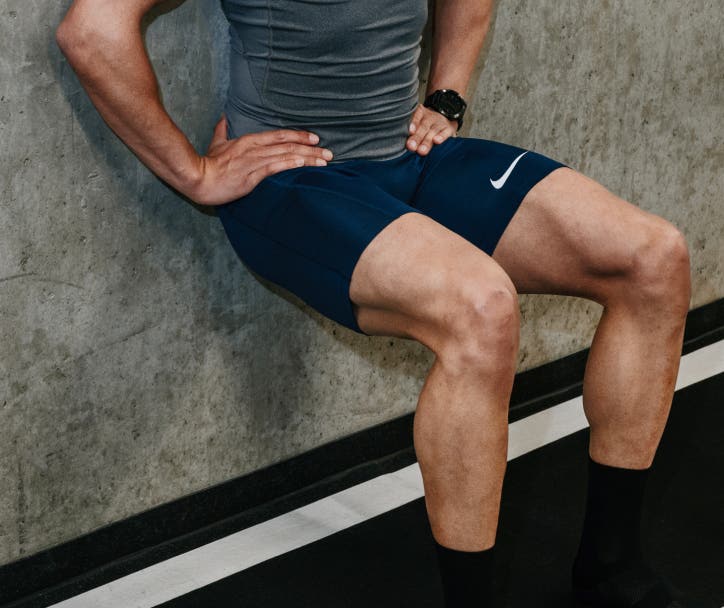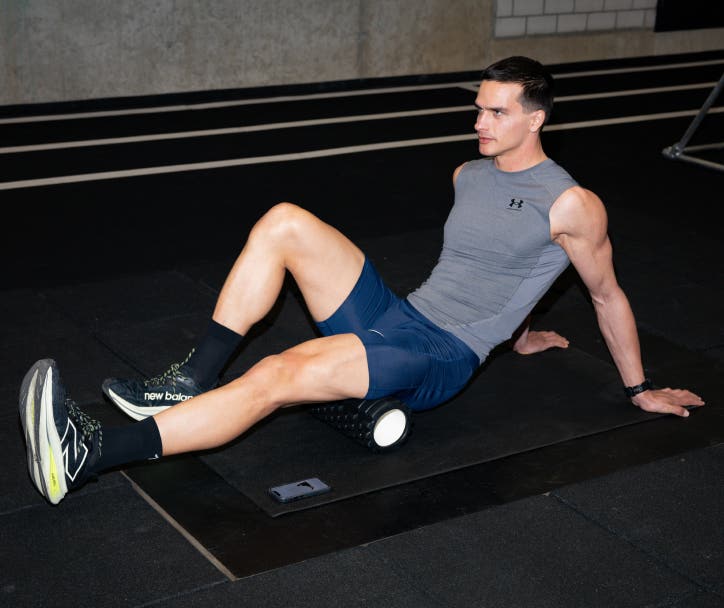*Disclaimer: If you are injured, it’s important to consult with your physician prior to resuming exercise. This article is meant to guide you on overcoming overuse injuries, but is not to be considered medical advice.
In the quest for peak physical fitness, overuse injuries can pose significant challenges. Even worse, they can be downright frustrating when you're chasing a specific goal.
These injuries, stemming from repetitive strain on the body's tissues, muscles, and joints, can impede progress and lead to discomfort.
With a comprehensive understanding of each condition and proactive measures to prevent and treat them, you can mitigate these setbacks.
Here we’ll dive into five prevalent overuse injuries—tendonitis, runner's knee, tennis elbow, piriformis syndrome, and shin splints. Each section will provide a deeper exploration of the injury's nature, evidence-based strategies for prevention, and practical solutions for relief.
Overuse Injury #1: Tendonitis
Tendonitis, characterized by inflammation of the tendons due to repetitive motion or overuse, can affect various parts of the body, including the elbows, wrists, shoulders, knees, and ankles.[1]
How it feels: Manifests as a dull ache or tenderness around the affected tendon, often worsening with movement or activity.
Location: The precise location of pain varies depending on the affected tendon.
Prevention:
Gradual Progression: Avoid abrupt increases in training intensity or duration, allowing tendons time to adapt to stress over time.[2] Progressive training over several weeks is paramount to increasing tendon strength.
Proper Technique: Ensure correct form and biomechanics during exercises to minimize excessive strain on tendons. If you have a history of tendonitis, it can be beneficial to temporarily modify or swap out exercises that trigger symptoms.
Cross-Training: Incorporate a diverse range of exercises to distribute workload across different muscle groups and reduce overuse of specific tendons. Check out this Blog article for some cross-training inspiration.
Relief:
Rest and Ice: Rest the affected area and apply ice packs to reduce inflammation and alleviate pain. To prevent making the problem worse, temporarily modify the way you use the affected area in your daily activities. For instance, use your non-dominant hand if your dominant one is causing issues.
Stretching and Strengthening: Perform gentle stretching exercises to improve flexibility and strengthen surrounding muscles, aiding in tendon healing and recovery.
Medical Intervention: In severe cases, seek medical attention for treatments such as physical therapy, corticosteroid injections, or extracorporeal shock wave therapy. Also, keep in mind that there are potential side effects and problems associated with chronic or long-term use of NSAIDs (Non-Steroidal Anti-Inflammatory Drugs).
Overuse Injury #2: Runner's Knee

Runner's knee, also known as patellofemoral pain syndrome, is a prevalent overuse injury among runners and athletes, characterized by pain around the patella (kneecap) region.[3]
How it feels: Typically presents as a dull ache or sharp pain around or behind the kneecap, exacerbated by activities such as running, squatting, or walking downstairs.
Additional Symptoms: Swelling, popping sensations, and a feeling of instability in the knee joint may accompany the pain.
Prevention:
Appropriate Footwear: Invest in quality running shoes with adequate cushioning and support to minimize impact on the knees.
Strength Training: Incorporate exercises such as Lunges or Deadlifts targeting the quadriceps, hamstrings, and hip muscles to improve knee stability and reduce strain on the patella. Eccentric training (i.e. step downs) can also be beneficial.
Gradual Progression: Gradually increase running mileage and intensity, avoiding sudden spikes in training volume to prevent overloading the knee joint.
Relief:
R.I.C.E. Protocol: Use the R.I.C.E. method (Rest, Ice, Compression, Elevation) to alleviate pain, reduce swelling, and promote healing. To reduce symptoms, temporarily avoid daily activities that cause discomfort. For example, opt for the escalator or elevator instead of the stairs.
Patellar Taping or Bracing: Try different taping techniques or knee braces as it might alleviate pain during physical activity.
Physical Therapy: Consult a physical therapist for tailored rehabilitation exercises aimed at improving knee biomechanics, strength, and flexibility to alleviate symptoms and prevent recurrence.
Overuse Injury #3: Tennis Elbow
Tennis elbow, or lateral epicondylitis, is a common overuse injury characterized by pain and inflammation on the outer aspect of the elbow, often resulting from repetitive gripping and wrist movements.
How it feels: Presents as a localized ache or burning sensation on the outer elbow, radiating down the forearm, particularly during activities involving gripping or wrist extension.
Functional Impairments: Weakness, difficulty gripping objects, and pain exacerbated by activities such as lifting, gripping, or twisting motions.
Prevention:
Equipment Modification: Ensure proper grip size and technique when using tools or sports equipment to reduce strain on the elbow tendons.
Forearm Strengthening: Incorporate exercises targeting forearm muscles, including wrist extensors and flexors, to improve strength and resilience.
Ergonomic Awareness: Maintain ergonomic positioning during daily activities, particularly those involving repetitive wrist movements, to minimize strain on the elbow tendons.
Relief:
Rest and Ice: Rest the affected arm and apply ice packs to reduce pain and inflammation in the elbow region.
Eccentric Exercise: Perform eccentric strengthening exercises for the wrist extensors to promote tendon healing and improve tendon resilience.
Supportive Bracing: Utilize elbow braces or straps to offload tension from the affected tendons and alleviate pain during aggravating activities.
Overuse Injury #4: Piriformis Syndrome
Piriformis syndrome involves irritation of the piriformis muscle, resulting in pain and discomfort in the glutes and along the sciatic nerve pathway.
How it feels: Typically presents as a deep, dull ache in the glutes, often radiating down the back of the thigh or calf, mimicking symptoms of sciatica.
Additional Symptoms: Tingling, numbness, or shooting pains may be experienced along the path of the sciatic nerve.
Prevention:
Stretching: Incorporate regular stretching exercises targeting the piriformis muscle and surrounding hip muscles to maintain flexibility and prevent muscle tightness.
Strengthening: Perform strengthening exercises, such as Shoulder Bridge Leg Raises, for the hip abductors, external rotators, and gluteal muscles to improve hip stability and reduce strain on the piriformis.[4]
Postural Awareness: Maintain proper posture during sitting, standing, and daily activities to minimize compression on the sciatic nerve and piriformis muscle. Also, ensure you vary your posture throughout the day. Even maintaining perfect posture for extended periods can lead to problems if you don't change it up.

Relief:
Stretching and Foam Rolling: Engage in gentle stretching and foam rolling of the piriformis muscle to alleviate muscle tightness and reduce pain.
Heat Therapy: Apply heat packs or warm towels to the affected area to relax tight muscles and improve blood circulation, promoting tissue healing.
Massage Therapy: Seek professional massage therapy or self-massage techniques to release tension in the piriformis muscle and alleviate pain and discomfort.
Overuse Injury #5: Shin Splints
Shin splints, or medial tibial stress syndrome, involve pain along the inner edge of the shinbone (tibia) due to repetitive stress on the muscles and tendons surrounding it.
How it feels: Typically manifests as a sharp or dull ache along the inner aspect of the shinbone, worsened by activities such as running, jumping, or walking on hard surfaces.
Physical Examination: Tenderness and inflammation may be present along the inner shinbone, often accompanied by swelling.
Prevention:
Adequate Footwear or Insoles: Select footwear with sufficient cushioning and support to absorb shock and reduce the impact on the shins during physical activity. Insoles with arch support are also a great option for additional support.
Gradual Progression: Gradually increase exercise intensity and duration, allowing muscles and tendons to adapt to increased workload over time.
Surface Variation: Vary training surfaces by incorporating softer surfaces such as grass or trails to reduce repetitive stress on the shins and lower extremities.
Relief:
Rest and Ice: Rest the affected leg and apply ice packs to reduce inflammation and alleviate pain in the shins.
Stretching: Incorporate lower leg stretching routines to alleviate some of the discomfort.
Strengthening Exercises: Incorporate strengthening exercises targeting the muscles of the lower leg and foot to improve stability and reduce strain on the shins.
Let’s recap
To prevent overuse injuries and maximize training efforts, it’s essential to remember a few key principles.
Take it slow – gradual progression is key. Steadily increase the duration or intensity of your exercise to ensure you don’t do too much too fast. Vary your workouts. Mix up your exercise routine and add cross-training to the mix to avoid overdoing it. Always stick to proper form. And finally, listen to your body. If it hurts, you’re likely doing it too much or incorrectly. Let your body rest, but also use strength and mobility exercises to complement your training and aid in recovery and relief.
By implementing these strategies, you can minimize the risk of overuse injuries and enjoy a safer and more effective fitness journey.
Sources
[1] Maffulli, N., Longo, U.G., & Denaro, V. (2010). Prevention and treatment of overuse tendon injuries. Sports Medicine, 40(9), 807-819.
[2] Brushøj, C., Larsen, K., Albrecht-Beste, E., Nielsen, M.B., & Hölmich, P. (2008). Prevention of overuse injuries by a concurrent exercise program in subjects exposed to an increase in training load: A randomized controlled trial of 1020 army recruits. American Journal of Sports Medicine, 36(4), 663-670.
[3] Boling, M.C., Padua, D.A., Marshall, S.W., Guskiewicz, K., & Pyne, S. (2009). Risk factors for patellofemoral pain syndrome: A systematic review and meta-analysis. British Journal of Sports Medicine, 43(2), 81-86.
[4] Boyajian-O'Neill, L.A., McClain, R.L., Coleman, M.K., & Thomas, P.P. (2008). Piriformis syndrome: A narrative review of the anatomy, diagnosis, and treatment. American Journal of Physical Medicine & Rehabilitation, 87(10), 843-852.